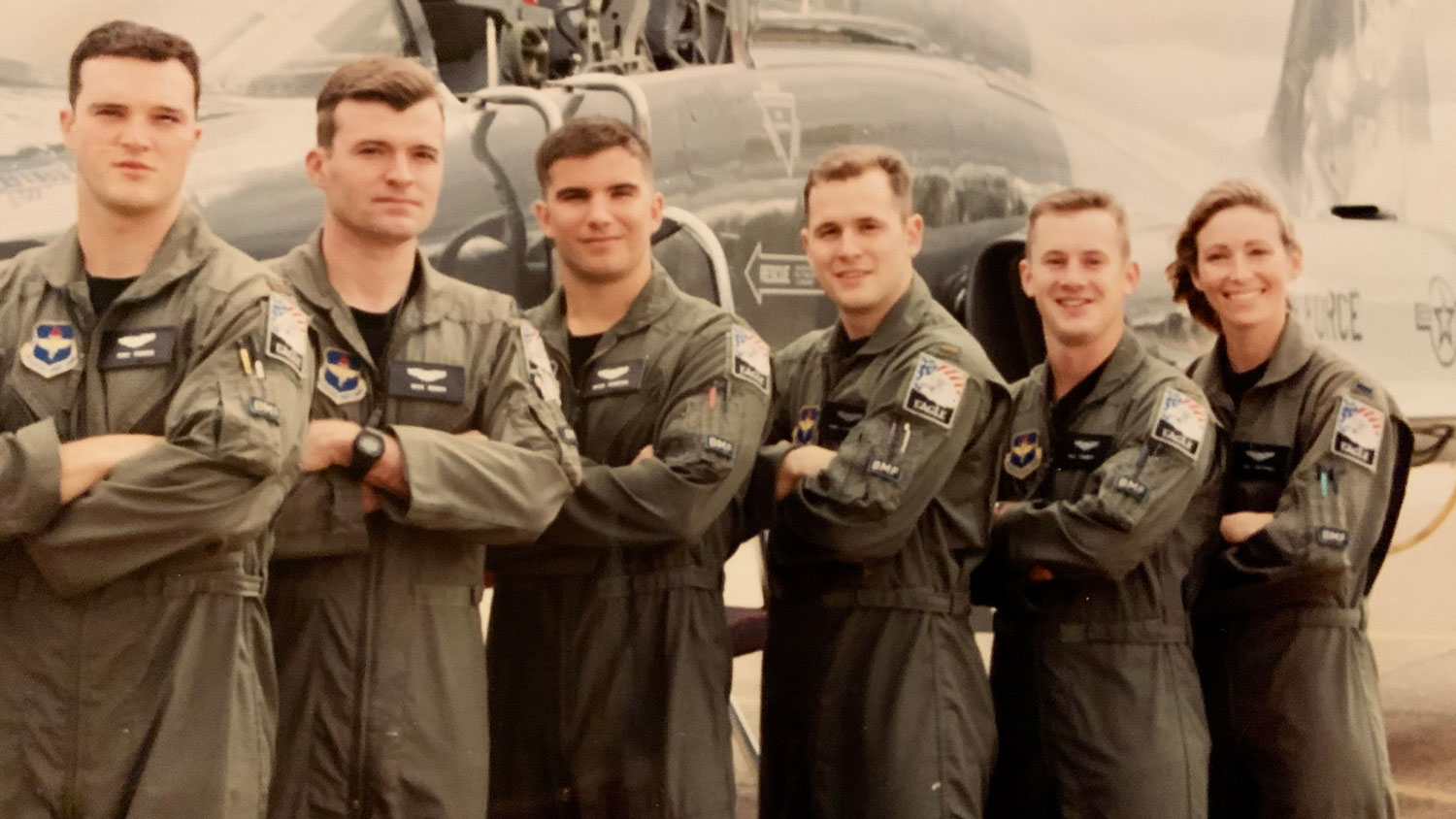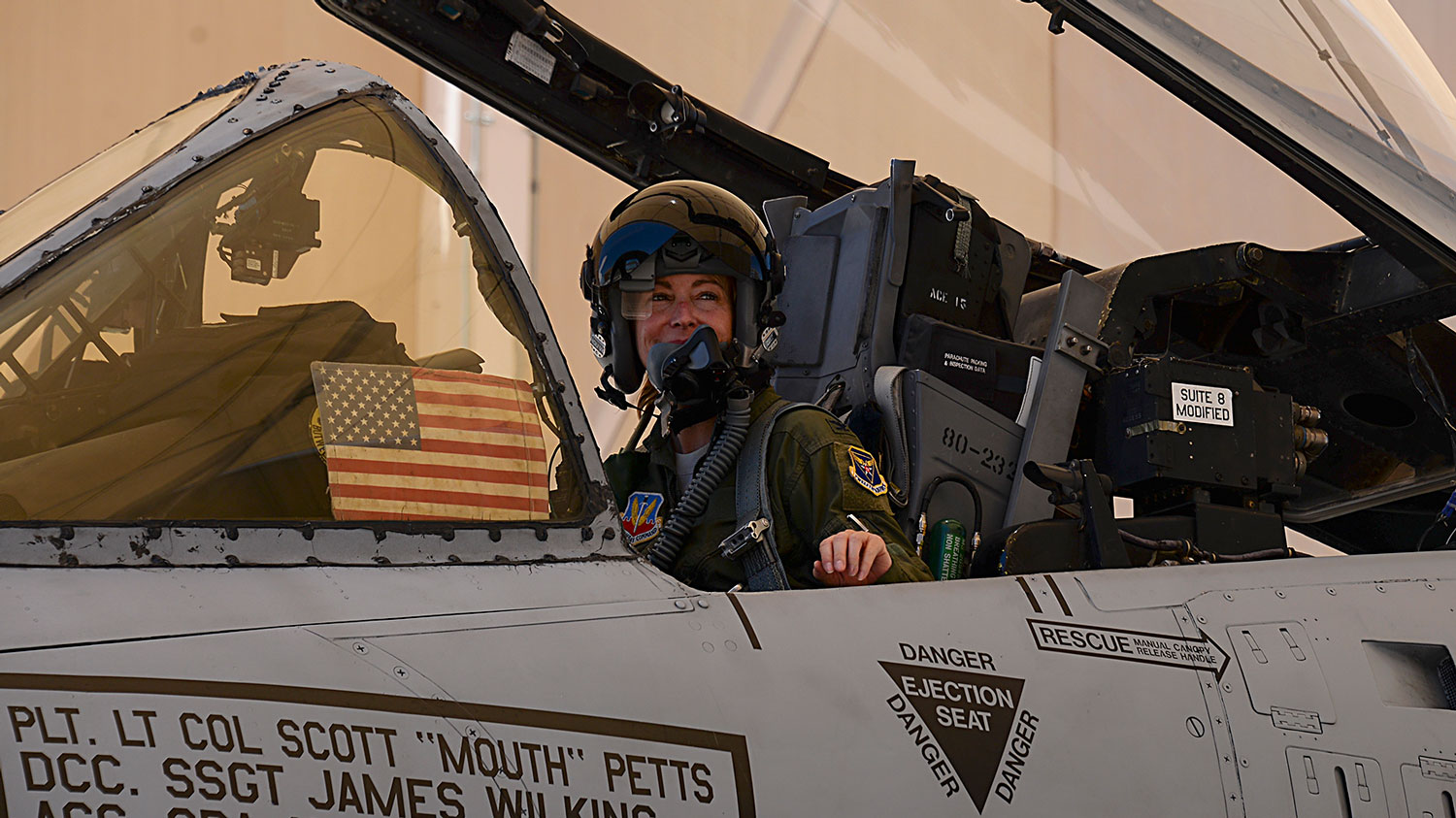Retired fighter pilot Killer Chick inspires future generations of female pilots with extraordinary story of heroism
A decorated US Air Force fighter pilot with the callsign Killer Chick has been talking about how important it is to inspire future generations of women.
Former A-10 Thunderbolt II pilot Colonel (Retired) Kim 'KC' Campbell has released a book detailing the extraordinary day she flew her severely damaged attack aircraft back to base, becoming one of the few pilots to ever land an A-10 successfully in manual mode.
Col Campbell's "outstanding heroism and selfless devotion to duty" led to the return of a valuable combat aircraft and her becoming an inspiration for future generations of female pilots.
Initially, being known as a 'female' fighter pilot and not simply a fighter pilot made her feel uncomfortable.
After years of training, Col (Ret'd) Campbell eventually became one of 35 female fighter pilots out of 3,500 in the US Air Force.
Once the fighter pilot had flown a few missions in combat, she wanted to be known as simply a fighter pilot without the female prefix.
Speaking with Gini Carlin on BFBS podcast Mavgeeks, she said: "I really didn't like it. I just was like, I'm a fighter pilot. Can I not just be accepted as that?"

On a Wing and a Prayer
That all changed on 7 April 2003 when the A-10 Thunderbolt she was flying was hit by a surface-to-air missile and damaged beyond repair over Baghdad during Operation Iraqi Freedom.
This experience changed her perspective on being celebrated as a female fighter pilot.
She realised that by sharing her unique story, she could inspire other young women and girls to pursue their dream career.
In response to the then Captain Campbell turning down several interviews about that intense day, a US Air Force public affairs officer said to the fighter pilot: "You know, ma'am, this isn't about you.

"It's about sharing your story so all these young women and girls can see that they can do it, too."
In her new book, Flying in the Face of Fear: A Fighter Pilot's Lessons on Leading with Courage, Col Campbell, details the astonishing events of the day she and her colleagues provided close air support to ground troops.
At that time in the war, US ground troops had reached Baghdad and so USAF fighter pilots would take off from Kuwait, fly up to Baghdad and wait in stacks of planes to get a call from ground troops needing assistance.

On 7 April, the skies were unusually cloudy but the conditions would not stop the A-10s from supporting ground troops under fire.
Col Campbell said: "I watched my flight lead go first and I just remember him kind of disappearing down through this hole in the clouds to get below the weather and he said, 'Alright, KC, it's your turn'.
"It was truly eye-opening to see this firefight. I mean, there were bright flashes and smoke and tracers.
"We were lower than we normally would be so I could see it all and it was a very active situation."
The A-10 pilots responded to the threat on the ground as usual but as Col Campbell pulled off target, she felt an explosion at the back of the aircraft.
She was in no doubt she had been hit, as she explains: "The jet immediately jumped over, pointing down at Baghdad below and my natural instinct was to just pull back on the control stick and I did that and absolutely nothing happened."
She did not want to eject in enemy territory but wasn't sure she would make it back to base with zero hydraulics.
The way she saw it, she only had two options: eject in friendly territory or rely on the backup manual mode – which she had never trained in due to its danger – to land back at base.
She remembered stories about other pilots safely landing during emergencies and, inspired by their bravery, chose the latter, saying: "I kind of pulled all those lessons learned, evaluated how my aeroplane was flying and I made a decision that I was going to try to land it, knowing that I could still eject at the last second."
After flying her damaged A-10 for an hour, Col Campbell felt confident in her ability to land the aircraft and made what she believes to be her best landing.
She said: "I just remember this tremendous sense of relief. I had survived that moment.
"Still to this day, by far the best landing. I don't know if it actually looked like that, but it sure felt that way."
Inspired by pioneering women who broke barriers
It was drawing on the lessons from her aviator heroes that encouraged Col Campbell to be proud of being referred to as a female fighter pilot.
Without many female role models growing up, the aspiring aviator was inspired by the Second World War WASP (Women Airforce Service Pilots) and even had a photo of them on her wall while in high school.
She said: "The women that served back in World War Two, who did these amazing things and flew fighter airplanes... but didn't get a lot of recognition for what they did.
"But they were out there doing it and I think, you know, they really set an example for me.

"They've put in the work, they excelled at what they did and it was this reminder that I could go do it, too."
The combat veteran is keen for young women and girls to be inspired by her career and that of other women who have found success in roles not traditionally associated with females.
The decorated pilot went from feeling frustrated about her career being defined by her gender to realising the value of being inspired by those who came before her.
She said: "I realised that sharing the story meant I was opening it up for other young women and girls and, really, young kids to just hear about these stories so, I think that's what changed for me, really, is this idea that it is important to share the stories."









